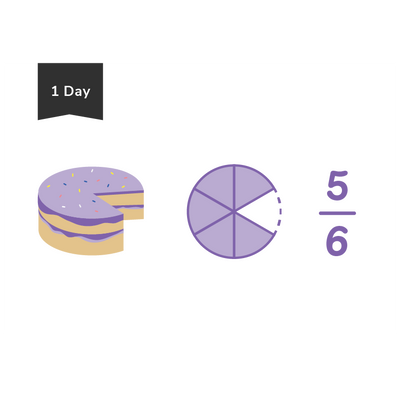How to tell a maths story using notations of fractions
Editor’s Note:
Transcript has been edited for clarity.
When it comes to using notations of fractions, Dr Yeap Ban Har thinks learners should start slow and develop a conceptual understanding in order to go beyond computational thinking and achieve mastery.
So, of course, that’s an easy way to teach fractions. Just tell them, “Divide changes to multiply. Then you invert the second fraction and you do what you must, you’ll get the answer”.
But we don’t do that because there is a danger in that.
Let me share with you a story to help us understand that danger a little bit more.
Storytelling using notations of fractions
This story was written by one of our civil servants. He’s the Head of Civil Service, and he wrote this to remind our civil servants about what it is that we do. Let me read to you:
How to make sure the butterfly cannot fly. How do you get a butterfly? First, there’s the egg, which hatches into a caterpillar, the caterpillar eats and grows. At the right time, it makes a cocoon out of it’s own body.
While in the cocoon, the caterpillar changes into a butterfly. When the butterfly is ready, it starts to break through the cocoon. First, a hole appears. Then the butterfly struggles to come out through the hole. This can take a few hours.
If you try to help the butterfly by cutting the cocoon, sure, the butterfly will come out easily, but it will never fly.
Your help has destroyed the butterfly.
The butterfly can fly because it has to struggle to come out. The pushing forces lots of enzymes from the body to the wing tips, this strengthens the muscles and reduces the body weight. In this way, the butterfly will be able to fly the moment it comes out of the cocoon. Otherwise it will simply fall to the ground, crawl around with a swollen body and shrunken wings and soon die.
If the butterfly is not left to struggle to come out of the cocoon, it will never fly.
What does this analogy tell us about using notations of fractions?
Of course, this is merely an analogy, but I think it’s an analogy that helps us understand why students need to go through the natural process in order to fly.
Otherwise sure, they can compute, the butterfly will get out of the cocoon. So if the goal is for them to compute, then telling them the procedure is fine. If the goal is to get the butterfly out, then cutting the cocoon is fine. But if the goal is for children to go beyond calculation, to fly, then the cutting clearly would not make them fly.
It’s an analogy, but it kind of helps us understand why we are doing all these troublesome things. It was so difficult to do that lesson, and you will see Year 7 students really struggle to come to terms with all of those things that we talk about.
But there’s an easy way. Just take a pair of scissors, cut the cocoon.
The calculation will be done. The butterfly will get out, but the problem is that’s all that’s going to happen. All they can do is compute. All that’s happened is the butterfly got out, but maybe the butterfly will die soon.
So yes, they can compute, but the computation may decay, or be forgotten or misinterpreted.
“Oh, I remembered, the teacher said something about dividing becoming multiplying and inverting something…”
And they might now invert the first fraction instead of the second fraction.
So I suppose that is the danger of cutting cocoons, or in our case, teaching them procedures not backed by conceptual understanding.
How to teach the procedure of fractions
So I think sometimes mathematics instruction has become unnecessarily complicated when, in actuality, it’s quite straightforward.
So in fractions there are only two key concepts. The equivalent fraction — fluently, able to rename, and a way to read fraction and then everything else is from what they did in whole numbers.
Like 2 + 2 = 4, only if the nouns are the same. So two ones, plus two ones, two tens, plus two tens, two apples plus apples.
You do not say two apples plus two boys, doesn’t make sense. Two apples and two oranges. That’s not four apples. That’s not four oranges. You cannot do two apples and two oranges. Yes, you can, if you can change the name, if you can rename to make them the same. Okay, Two fruits and two fruits, now business as usual.
So that concept is not difficult and they have been doing it since Reception. That’s why the Reception teachers make them sort, before they count.
Sorting is something they learn before they come to Year 1. Why did they sort things into groups, it’s so that they appreciate this belongs to this set, these are toys, this belongs to that set, these are things I eat, and then I count the toys separate from the things I eat.
That’s the basics of it.
Fractions for Mastery CPD
Would you like to gain confidence with fractions? This advanced, one-day course will give you the boost you need. Learn from one of our friendly experts in a relaxed, face-to-face setting.
